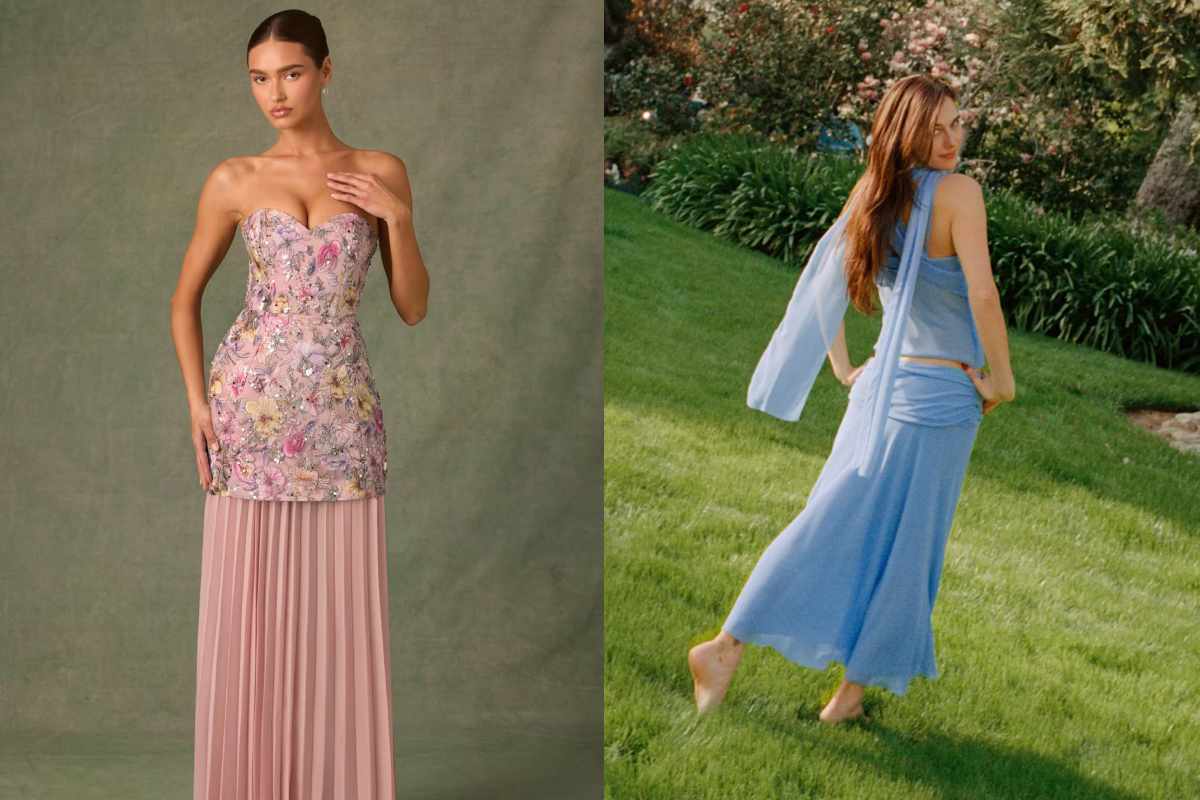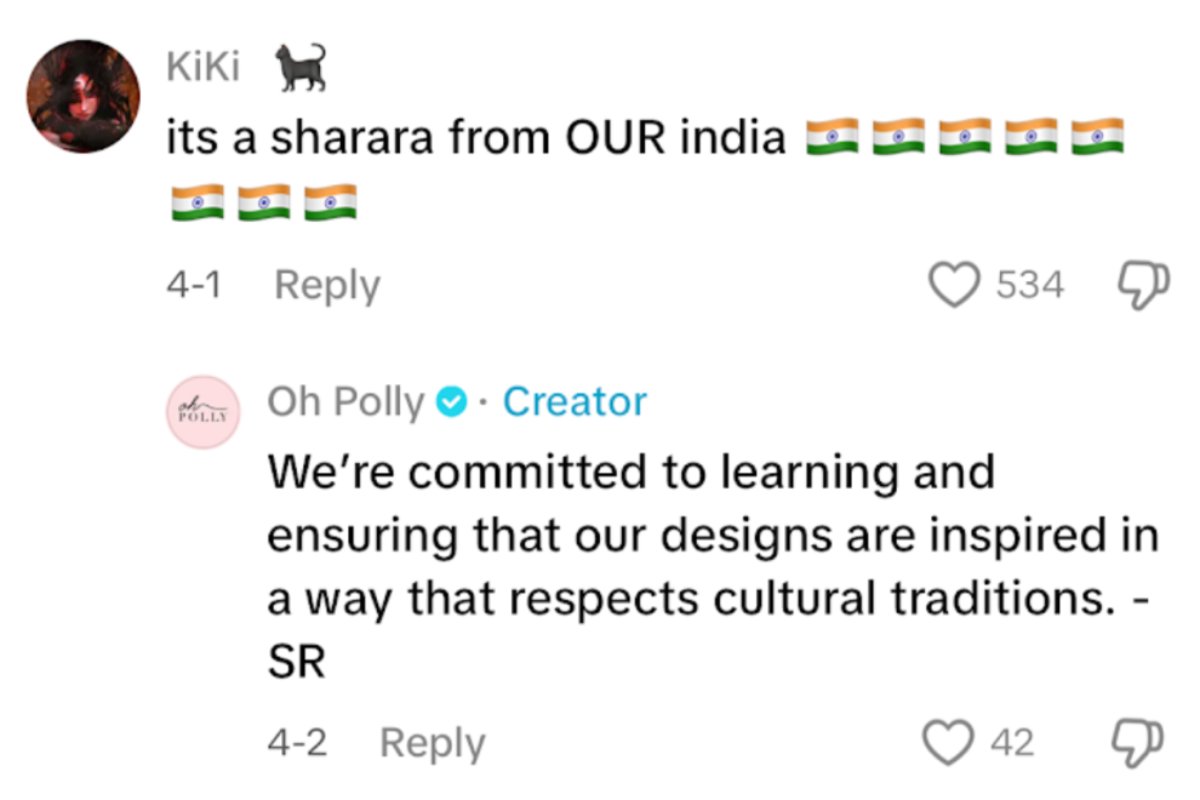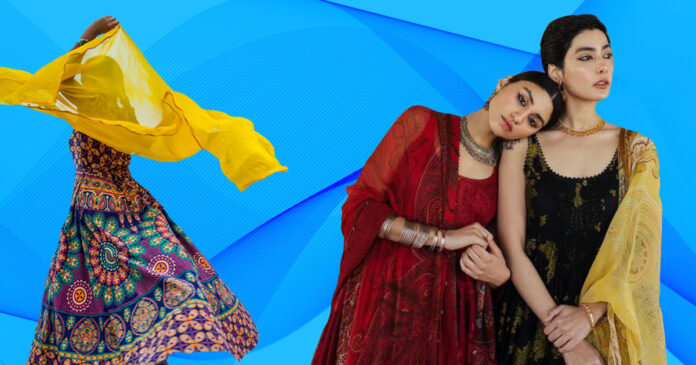Just when we think we are so over cultural appropriation, the West proves us wrong. There’s something both amusing and infuriating about the West’s selective amnesia when it comes to culture. One day, it’s mockery and exoticism. Next, it’s rebranded minimalism, “avant-garde” fashion, or, in the most recent example, a Scandinavian shawl. Yes, a European fashion house tried to rebrand the South Asian dupatta as some sort of Nordic ancestral scarf. And no, they didn’t even say “inspired by.”
Welcome to 2025, where your grandmother’s dupatta is now €300, beige, and apparently from Sweden.
The Dupatta: Apparently Now Scandinavian
To understand why this sparked such outrage, you need to understand what the dupatta represents. It’s not just a piece of cloth. It drapes over the shoulders of village women in Sindh, floats behind brides in Mumbai and flows with fierce elegance at Lahore protests. It’s been painted in Mughal miniatures, praised in poetry and passed down through generations. Now, apparently, it’s a “Scandinavian shawl.”
Imagine being gaslit into thinking that our ancestors’ culture was Scandinavian all along.
Read More: Hot or Not: Summer Fashion Trends to Start Trying Now
The Rebranding Machine: A Tale as Old as Colonialism
This isn’t the first time this has happened, and we know that it won’t be the last. From yoga to turmeric lattes, kohl to bindis, the West has an enduring habit of picking up “ethnic” or “third world” elements and then scrubbing them from their cultural roots. What do they do next? Sell them back to us with a shiny new label and a four-figure price tag.
What makes the Scandinavian shawl stunt so BIG? It’s the fact that it is being painted as a new discovery; a “revival” of some ancient European tradition all while completely ignoring the millennia of textile and fashion heritage from South Asia.
We’re talking about a region that was exporting silk, cotton and dyes when most of Europe was still figuring out how not to wear itchy animal hides. Our weaving techniques were so advanced that colonisers literally dismantled local industries to prevent competition. But today, a white model in a beige scarf gets hailed as a visionary?
Bipty, Oh Polly & Reformation’s Repeat Offenses
Unfortunately, this isn’t an isolated incident. Western brands have made an entire sport out of cultural theft.
Last May, an employee at Bipty, a fashion community, posted a now-deleted video on TikTok, flitting through Pinterest images of white women in floor-to-mid-length floral dresses and semi-sheer scarves draped across their chests. In some photos, pants completed the look. “The vibe, the aura, what is it?” said the employee. “It’s very European, it’s very classy.” Within hours, confusion, frustration, and laughter from South Asians flooded the comments and “For You” pages. “The vibe is Desi, the aura is South Asian — the shawl, that’s a dupatta, that’s a chunni,” clapped back Meghana, an Indian-American TikToker.

Just earlier this month, fashion brand Reformation released a collection with a three-piece outfit (with a skirt, top, and scarf) that eerily resembled a lehenga. Not to be outdone, Oh Polly released a pink outfit that, as fit folks say, looked like a Sharara. The brand posted a TikTok of its new “Galia convertible gown” (a baby pink bejewelled bodice with matching pleated wide-leg trousers).
When backlash ensued, Oh Polly appeared to acknowledge the misstep by replying to some comments that the brand would “ be more mindful in ensuring that cultural elements are honoured with respect in our designs moving forward”. But fast forward two weeks and the campaign and the TikToks are still going strong.

What’s in a Name?
Now, defenders of the fashion house (and there are always defenders) argue that “shawl” is a generic term, and many cultures have similar garments.
Some have been questioning the criticism these brands are facing. “I’m sorry — we complain when Western fashion isn’t inclusive and then complain when it diversifies? What?” one person on TikTok wrote. Several comments like this and others who think we should “share” instead of gatekeep our culture have been left under TikToks discussing the appropriation of South Asian clothing.
Fair point. But let’s not pretend context doesn’t matter. The issue lies in the fact that there is an existing power imbalance between South Asian and Western cultures. With hundreds of years of colonisation that have continued to impact South Asians and their connection to culture, it is deeply upsetting to have all the things that were deemed less than or uncivilised suddenly be trending fashion pieces now.
When we wear it, it’s too ethnic, too modest, too foreign. When they wear it, it’s elevated, chic and minimalist. It’s the same cloth. But one gets searched at the airport, and the other walks the Paris runway.

This Isn’t Inspiration. It’s Erasure.
Let’s get one thing straight: cultural exchange is beautiful. South Asians aren’t gatekeeping a strip of cloth. What we’re tired of is erasure. Of white models in dupattas being called “visionary,” while brown girls in the same outfit are seen as “too ethnic” or “not integrating.”
This is a wake-up call for South Asians, too. We’ve allowed ourselves to laugh off cultural appropriation for too long. We giggle when someone wears jhumkas at Coachella or a lehenga to a “Bollywood-themed bachelorette.” But the more we normalise it, the more our heritage becomes something others can co-opt without credit.
So the next time you see a “Scandinavian shawl” making waves, just smile — and say, “Nice dupatta, babe.”
Stay tuned to Brandsynario for latest news and updates






































